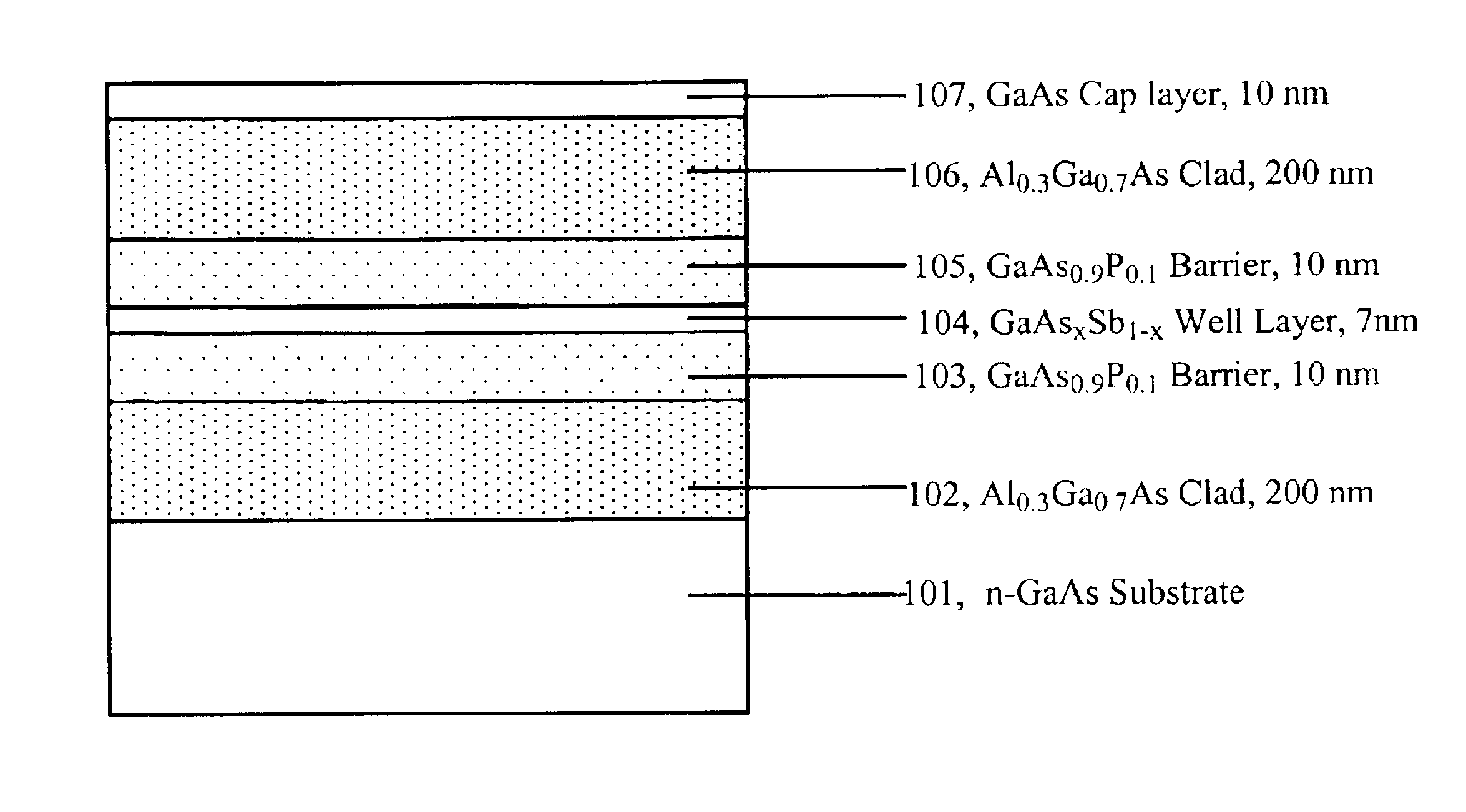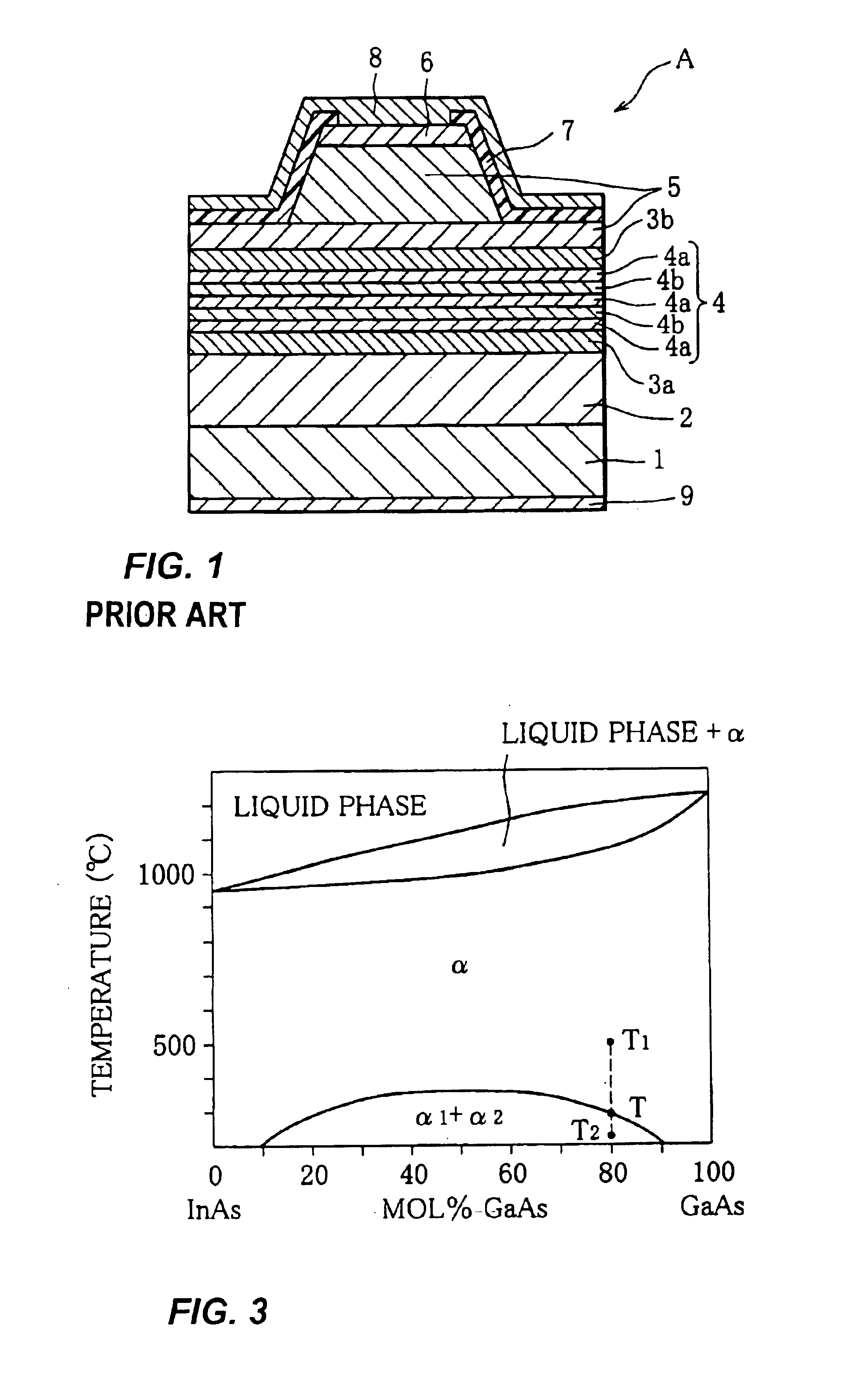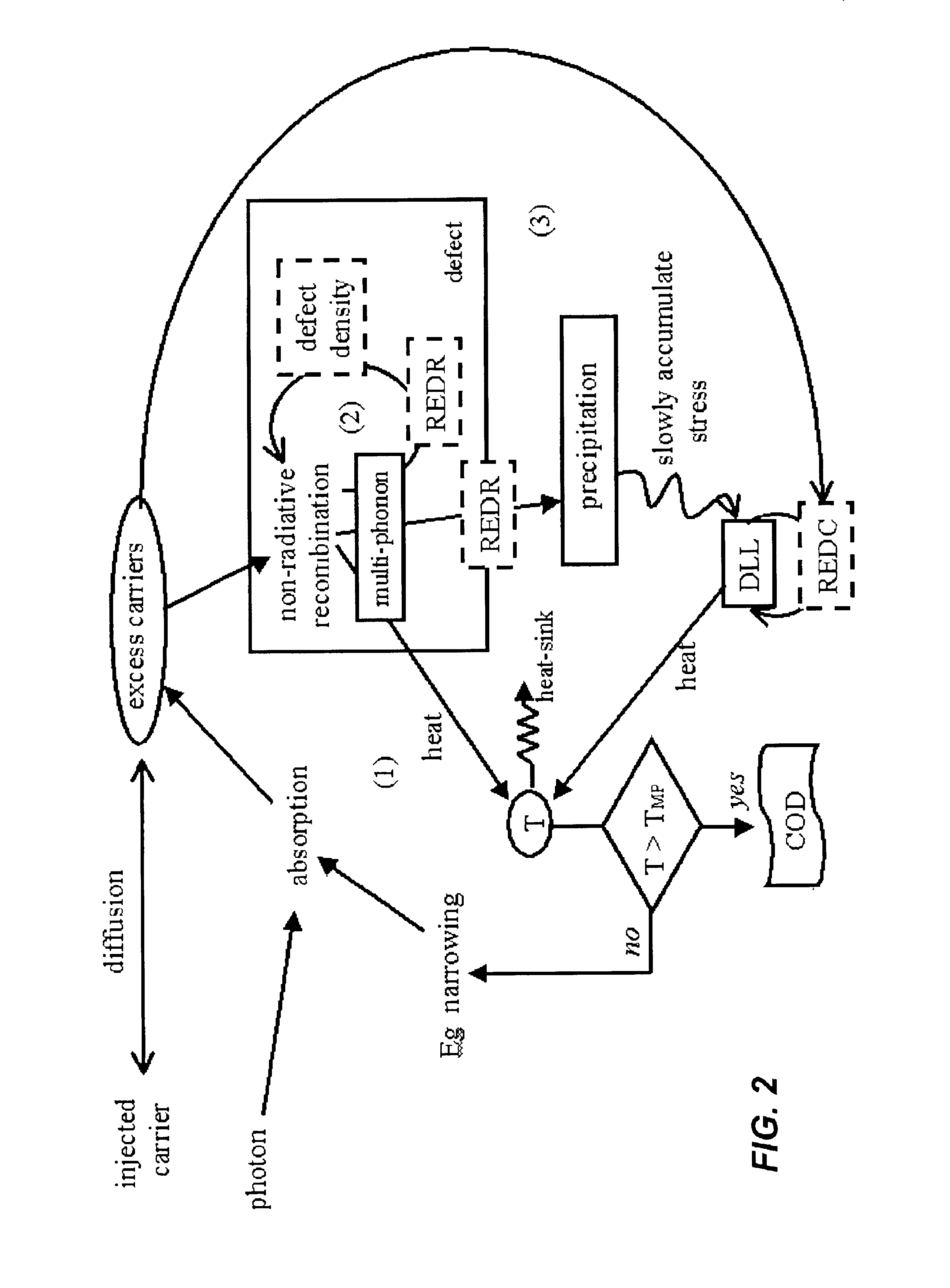Semiconductor laser device
a laser device and semiconductor technology, applied in the field of semiconductor laser devices of facet-emitting type, can solve the problems of large strain, rapid deformation of laser diodes, and catastrophic failure of this mode, and achieve the effect of good thermodynamic stability and higher reliability
- Summary
- Abstract
- Description
- Claims
- Application Information
AI Technical Summary
Benefits of technology
Problems solved by technology
Method used
Image
Examples
Embodiment Construction
[0052]There is an increasing demand that the laser devices which emit at a wavelength band of 980 nm for EDFAs (Erbium-doped Fiber Amplifiers) should be driven to generate high optical power. In the applications where a laser device A shown in FIG. 1, for example, is driven to generate high power of 200 mW or greater over a long period of time to realize coupling to a single mode fiber (SMF), higher optical density is created.
[0053]Additionally, laser devices which emit at a wavelength band of 1050 nm are developed in order to apply for TDFAs (Thulium-doped Fiber Amplifiers). TDFAs make the available bandwidth for dense wavelength-division multiplexing (DWDM) to expand to the short wave region of 1460-1480 nm (S-band). The structure of these 1050 nm-LDs also contains InGaAs quantum wells, same as the device A.
[0054]In the development of these LDs, the progress for the expansion of output power is often limited by the degradation in the higher power operations. Generally, the screeni...
PUM
 Login to View More
Login to View More Abstract
Description
Claims
Application Information
 Login to View More
Login to View More - R&D
- Intellectual Property
- Life Sciences
- Materials
- Tech Scout
- Unparalleled Data Quality
- Higher Quality Content
- 60% Fewer Hallucinations
Browse by: Latest US Patents, China's latest patents, Technical Efficacy Thesaurus, Application Domain, Technology Topic, Popular Technical Reports.
© 2025 PatSnap. All rights reserved.Legal|Privacy policy|Modern Slavery Act Transparency Statement|Sitemap|About US| Contact US: help@patsnap.com



